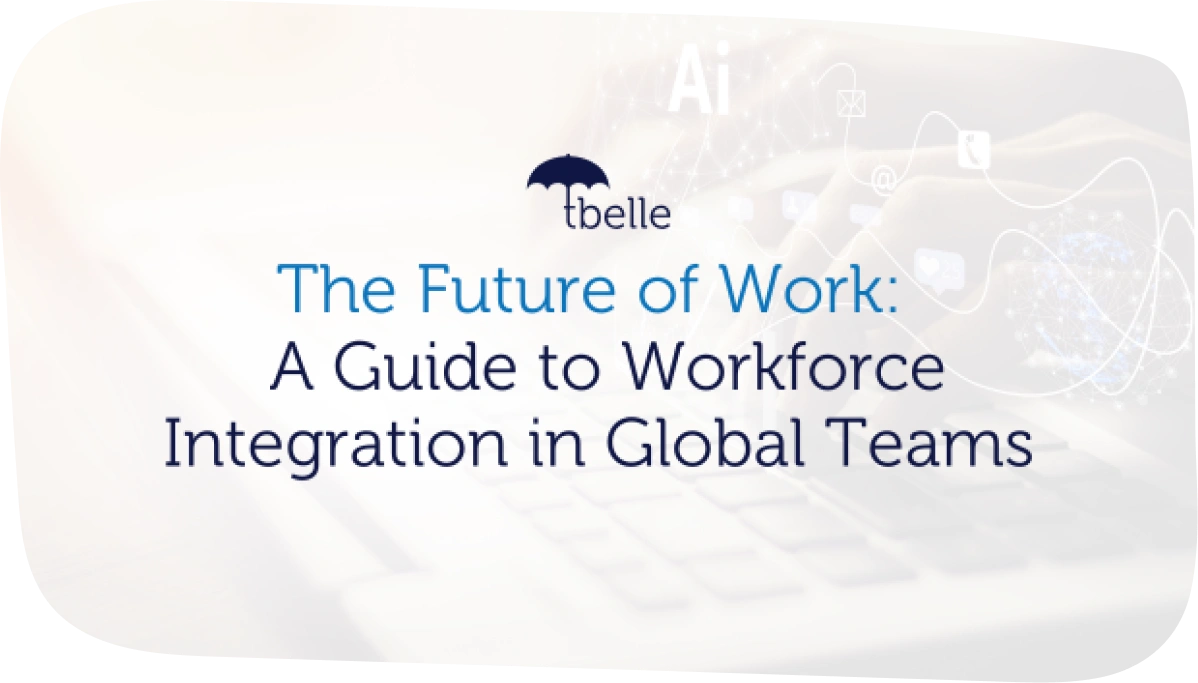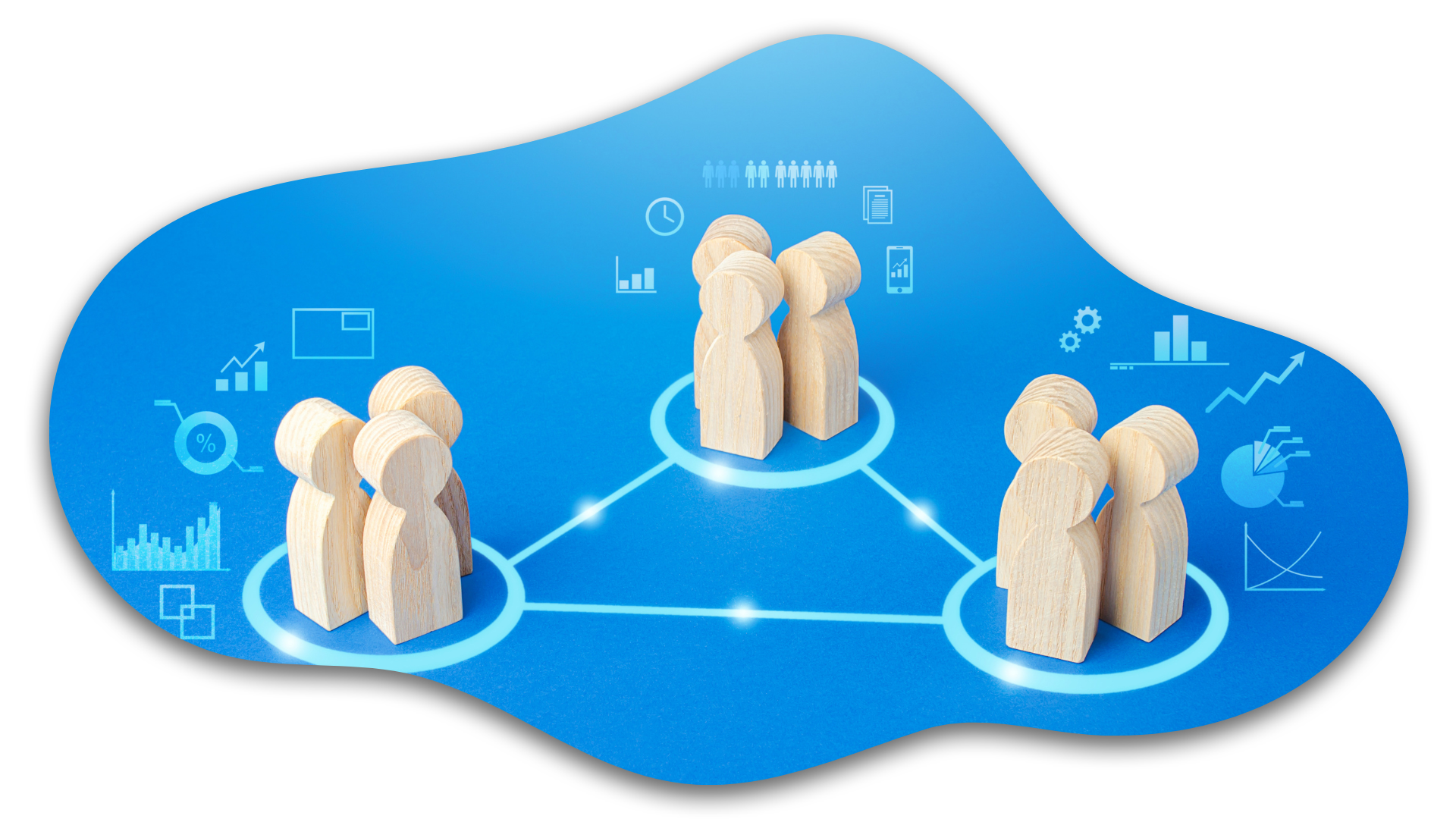Tbelle Insight:
It is predicted that 42% of business tasks will be automated by 2027.

Table of Contents
The Future of Work is an evolving concept that addresses the dynamic transformation of work environments, methodologies, and expectations, driven largely by advancements in digital technology, the expansion of globalisation, and shifting workforce demands. With businesses facing unprecedented changes, automation continues to reshape job functions and workflows.
Notably, the Future of Jobs Report by the World Economic Forum shows that respondents now predict that 42% of business tasks will be automated by 2027—a significant shift that signifies the importance of preparing for new work dynamics. This accelerated shift toward automation, coupled with trends like remote work and a growing emphasis on workforce diversity, necessitates a focus on workforce integration, especially for companies with global, distributed teams.
Workforce integration—the systematic approach of uniting employees across regions, cultures, and time zones into cohesive, high-performing teams—has become essential for maintaining productivity, innovation, and collaboration across borders. In this article, we’ll explore the strategies, challenges, and solutions in workforce integration, examining its crucial role in shaping the future of work for global teams.
Key Drivers of the Future of Work
The rapid development of AI, machine learning, and automation is revolutionising workflows, streamlining processes, and optimising productivity. A report published in Journal of the Knowledge Economy shows that two thirds of the surveyed participants believe in increased self-employment due to technology, emphasising the growing significance of technology in the workplace. With AI handling repetitive tasks, employees are free to focus on more strategic, creative, or interpersonal aspects of work.
Cloud-based technology, collaboration tools, and communication platforms, like Slack, Zoom, and Microsoft Teams, enable real-time interaction and data sharing, ensuring a more integrated and efficient workforce. This shift facilitates “digital workplaces” where collaboration isn’t limited by geography but by access to the right technology.
One study found that 74% of the workforce expects remote work to become “standard”.
COVID-19 accelerated remote work adoption and introduced a sustained, flexible work environment as the new norm. According to a survey conducted by Growmotely among professionals and entrepreneurs, 74% of them answered that they believe remote work will become the new normal.
Globalisation enables companies to source skills from any location, promoting workforce diversity and access to highly specialised talent. However, this shift also emphasises the need for effective workforce integration, as teams from vastly different cultures must work harmoniously within the same framework.
Generational shifts are reshaping work culture. Millennials and Gen Z, who will comprise 58% of the global workforce by 2030, place a high premium on work-life balance, flexible work schedules, and purposeful employment. This results in a workforce that’s not only diverse in age and experience but also more socially conscious and values-driven, impacting how organisations shape their missions, policies, and daily operations.
What is Workforce Integration?
Workforce integration is the process of creating a unified, productive team from employees across multiple regions, cultures, and time zones. This involves establishing common goals, streamlined communication protocols, and inclusive practices to ensure seamless collaboration.

Unlike traditional management, which often prioritises performance metrics alone, Workforce Integration focuses on blending four core pillars—Workforce, Strategy, and Purpose—to foster a cohesive and motivated workforce.
At its core, Workforce Integration redefines onboarding, engagement, and management practices to build trust and collaboration, regardless of geographic barriers. By immersing employees in the organisation’s culture and vision from day one, this approach helps create a unified, productive, and highly engaged workforce that contributes to both individual and company-wide fulfilment and success.
Workforce Integration is crucial for fostering collaboration and cohesion among distributed teams, especially in today’s global economy. Remote employees who feel fully integrated into their company’s culture and mission are more likely to feel being cared for, valued and supported.
According to recent data, employees who feel cared for at work are 3.2 times more likely to be happy in their roles—reflecting a notable 35% increase since the pandemic began. This demonstrates that fostering a culture where employees genuinely feel seen and appreciated is critical not only to their happiness but also to building a resilient, engaged workforce
Effective workforce integration boosts innovation and collaboration, as diverse backgrounds and perspectives contribute to problem-solving. With this innovative approach, companies are better positioned to cultivate a unified workforce, maintain a competitive edge, and unlock the full potential of their global talent.
Strategies for Effective Workforce Integration Today and in the Future
Workforce Integration redefines traditional practices by immersing employees in the company’s culture and values from onboarding through every stage of their journey. It prioritises deep connections in engagement, a positive and supportive work environment, and management practices that focus on purpose and fulfilment rather than solely on metrics.
This global team management approach ensures employees feel aligned with the company’s mission, valued, and motivated to contribute meaningfully. Below are some effective strategies to implement Workforce Integration and build a more cohesive, purpose-driven workforce.

To support workforce integration, companies must adopt cloud-based platforms and collaborative software. Platforms like Asana and Trello facilitate task management, while Slack and Teams enable real-time communication across borders. Microsoft’s Workplace Analytics, for example, provides insights into team performance, helping managers identify and address workflow bottlenecks.
Aligning company values across regions is crucial to workforce integration. A unified culture can be cultivated through virtual events, recognition programs, and team-building exercises, which foster camaraderie and mutual respect. For example, hosting daily huddles or monthly virtual meetings to allow employees from different locations to interact and strengthen their connections.
Research by Glassdoor reveals that 77% of employees consider company culture before applying for a job, emphasising its role in attracting and retaining talent. Building a shared culture helps to align diverse employees with the company’s goals, values, and mission.
Continuous training in cultural awareness, collaboration, and leadership can improve workforce integration by equipping team members with the skills to navigate multicultural dynamics. Many leaders believe upskilling is essential to workforce integration. Providing career development and mentorship opportunities also fosters growth within distributed teams, promoting retention and job satisfaction.
Companies can use data to monitor productivity, employee satisfaction, and performance metrics. Tools like Qualtrics and Culture Amp collect feedback from employees to help managers understand and address their needs. Adapting policies based on data insights allows for more responsive and personalised integration strategies, leading to improved team cohesion and productivity.
Conclusion
As the Future of Work continues to evolve, organisations face the imperative to not only adapt to technological advancements and globalisation but also to unite their diverse, distributed teams through effective workforce integration. The rise of automation, remote work, and global talent pools are fundamentally changing how businesses operate, requiring strategies that focus on collaboration, culture, and alignment across borders.
Embracing workforce integration ensures that organisations are prepared for the shifts in job functions, workflows, and employee expectations that lie ahead. A robust approach to integration doesn’t just increase productivity; it builds a resilient, values-driven workforce that is well-positioned to leverage the full potential of global talent and maintain a competitive edge in the future.










